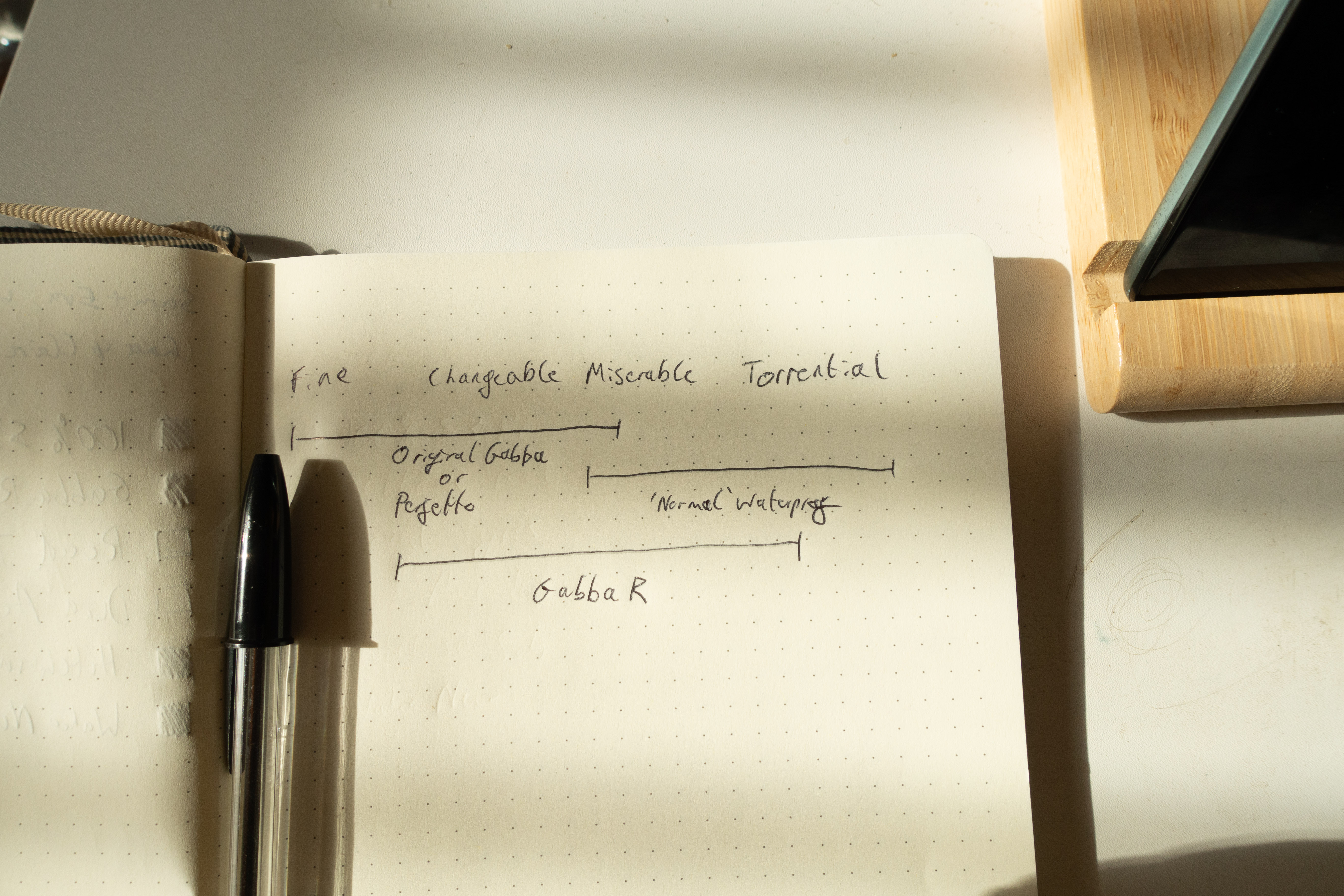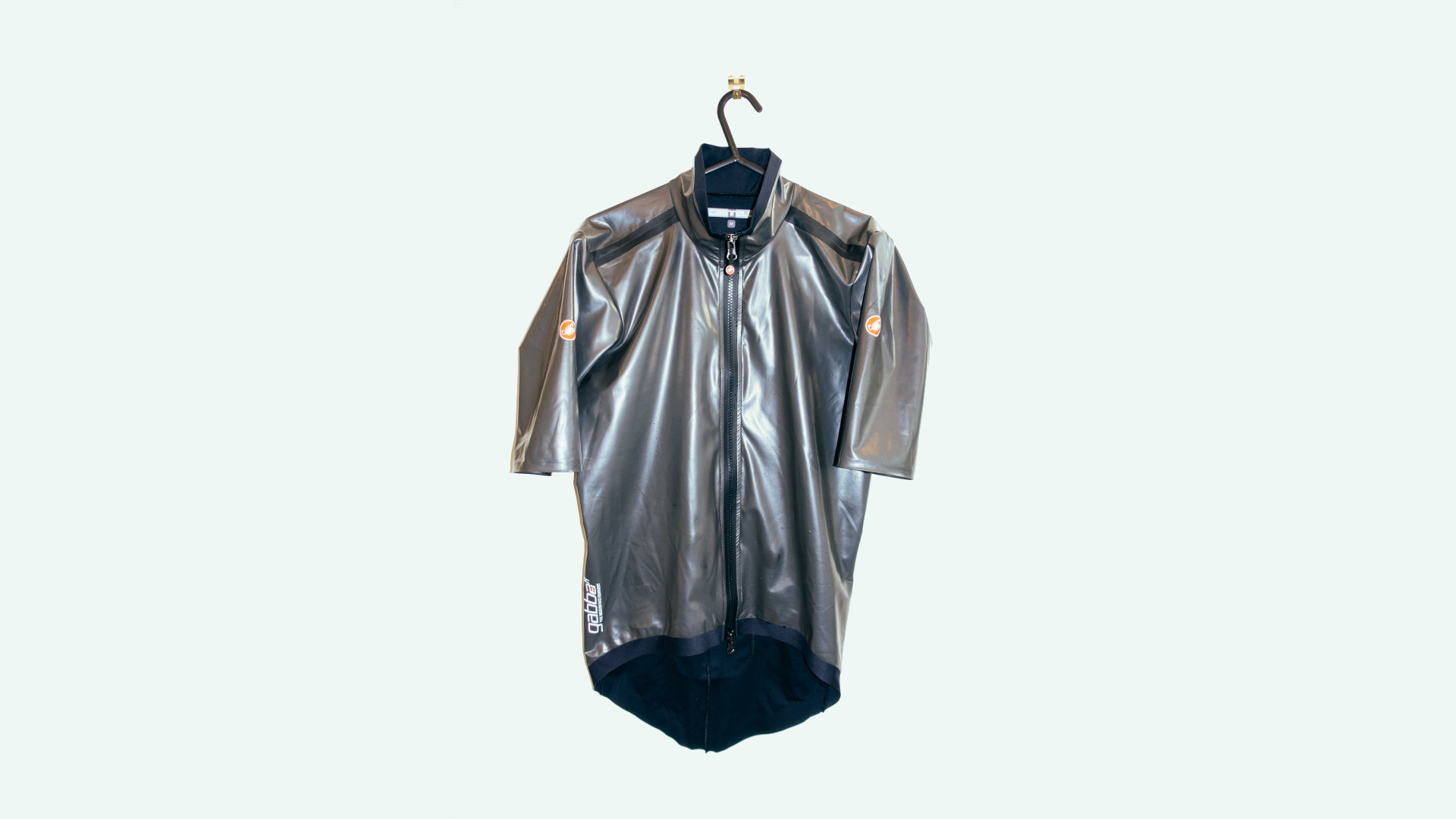
I don’t think it’s hyperbole to say the original Castelli Gabba changed the landscape of wet-weather cycling apparel. It was so good I have still got mine, patched up from crashes and looking well worn, and I can’t part with it, because for some conditions very little has come close to it since. For riding hard in the rain without overheating it was phenomenal, but you would still get wet.
I’ve had the new Gabba R for a while now, long before its actual launch, and I am genuinely impressed by what it can offer. I’ve ridden it in sideways rain in low single-figure temperatures, but also on changeable days where the mercury is touching double figures.
Having tested more or less all of the best waterproof cycling jackets on the market I feel pretty confident in being able to tell you all the good, and the bad (spoiler - there isn’t much), and whether the latest in a long lineage of foul weather race gear is worthy of carrying the Gabba name.
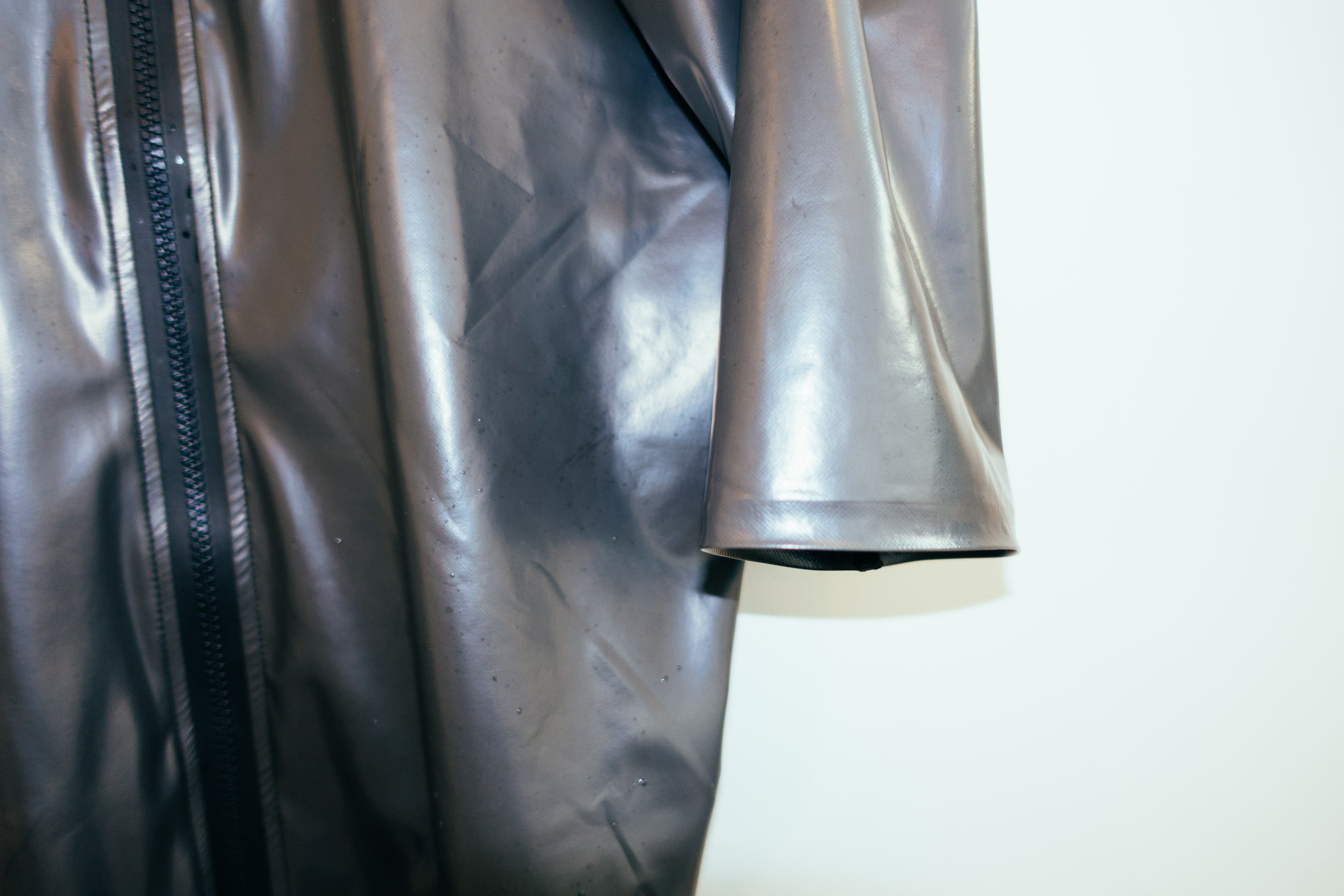
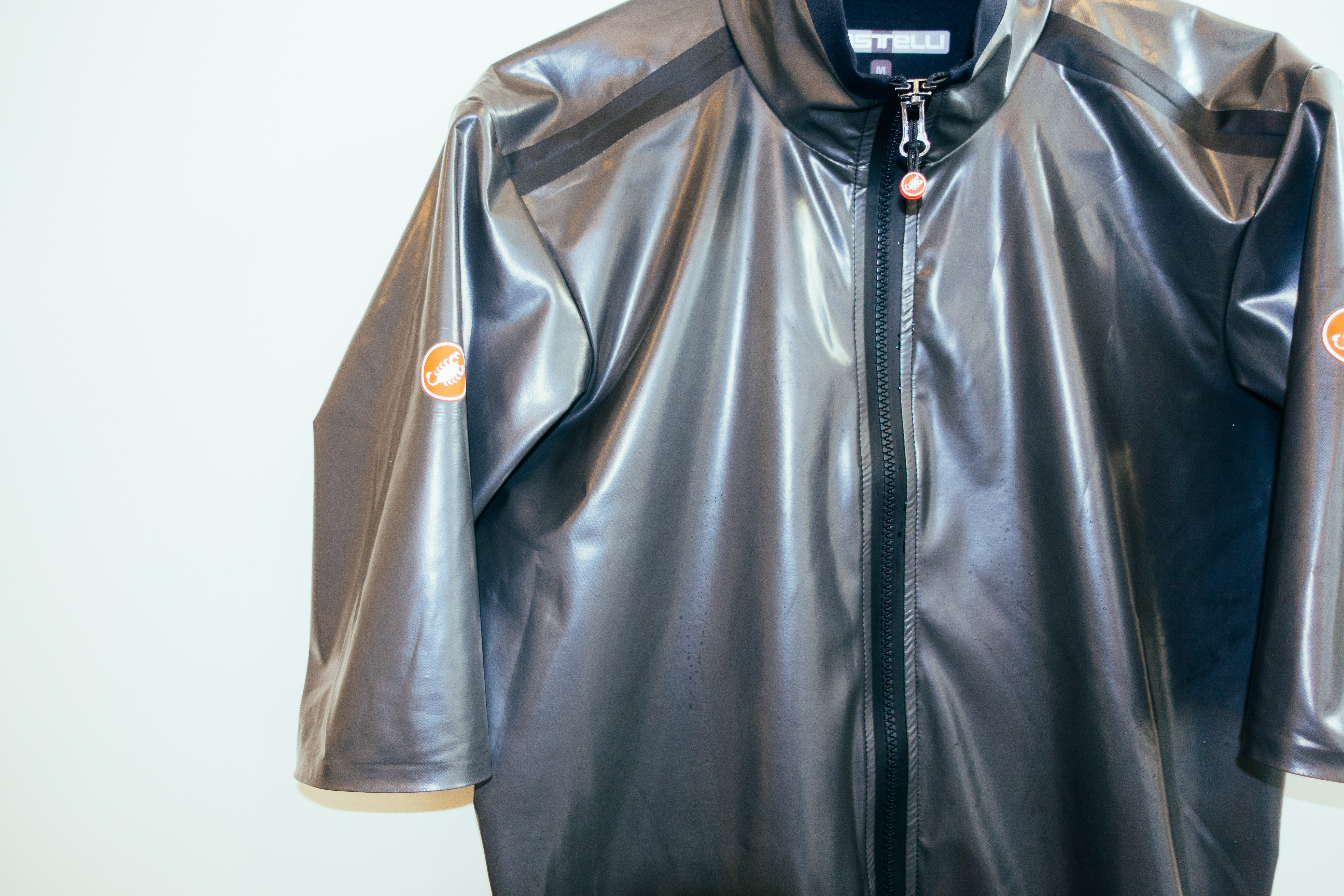
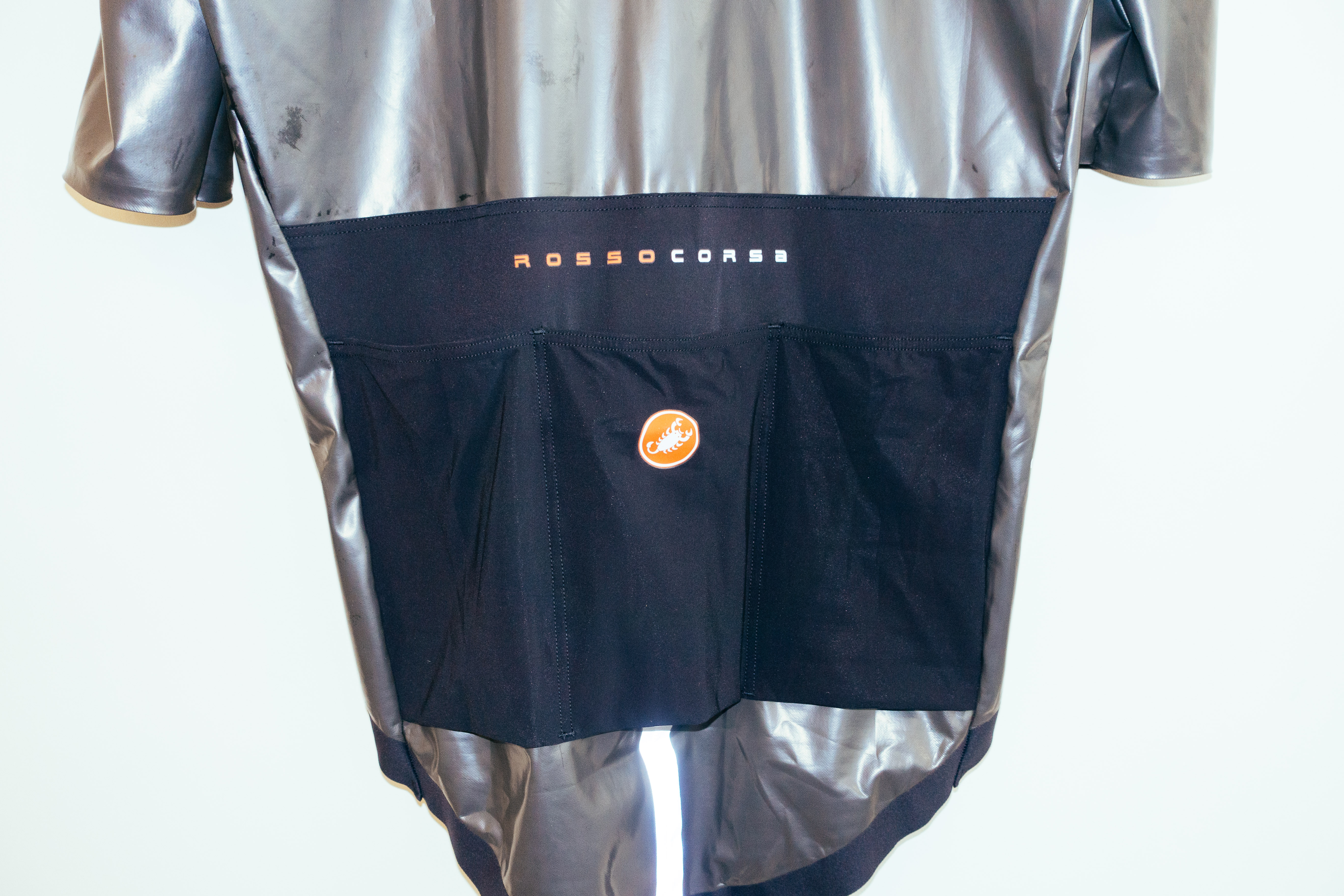
Design and aesthetics
The first thing to make clear is that this isn’t a waterproof jacket; it’s a waterproof jersey. It is designed to go over a race-fit jersey, but the way it fits is like a second skin. It’s more snug than many jerseys I’ve worn, and clearly, aerodynamics has been at the forefront of Castelli’s mind when developing the Gabba R. In fact, in wind tunnel testing, in a standard road position, it’s around 1% faster than the brand's Sanremo skinsuit. Compared to the brand's ‘normal’ waterproof jacket, the slicker, this figure is more like 4%.
As well as fitting like an aero jersey it’s also cut like it, with the addition of a taller caller and a more dropped tail. The sleeves come to the elbow, meaning even if you’re wearing the most modern of modern race jerseys you’re not going to have material poking out, ready to wick moisture in. The end of the sleeves is a proper cuff, so it grips the arms well too.
The short sleeve version at least is designed to work with the brand’s excellent Nano Flex arm warmers, which themselves have a degree of water repellency. The long sleeve version, which I haven’t tested, has an extra layer of fabric over the forearms so that the tacky outer fabric doesn’t grab when using the rear pockets.
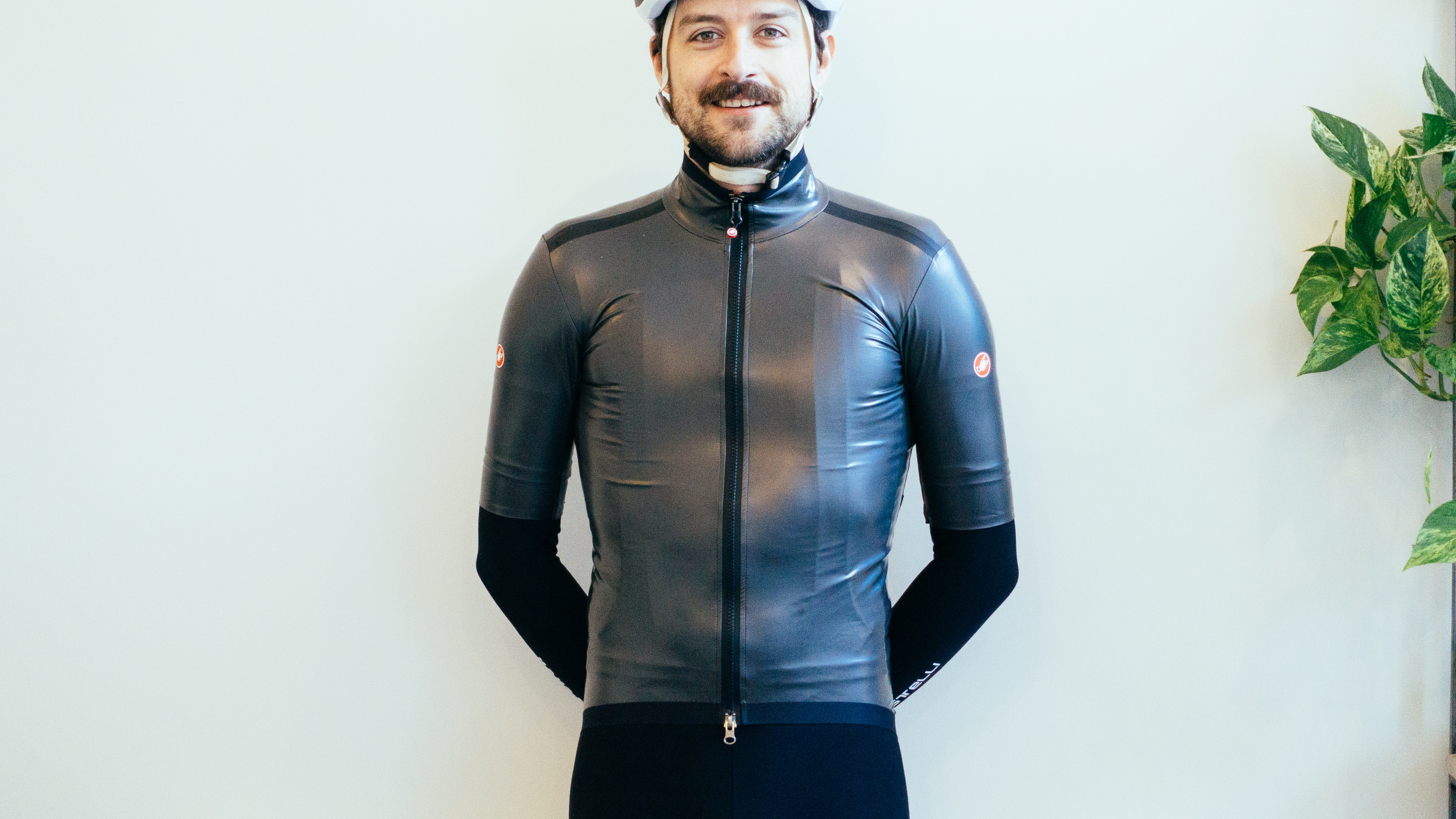
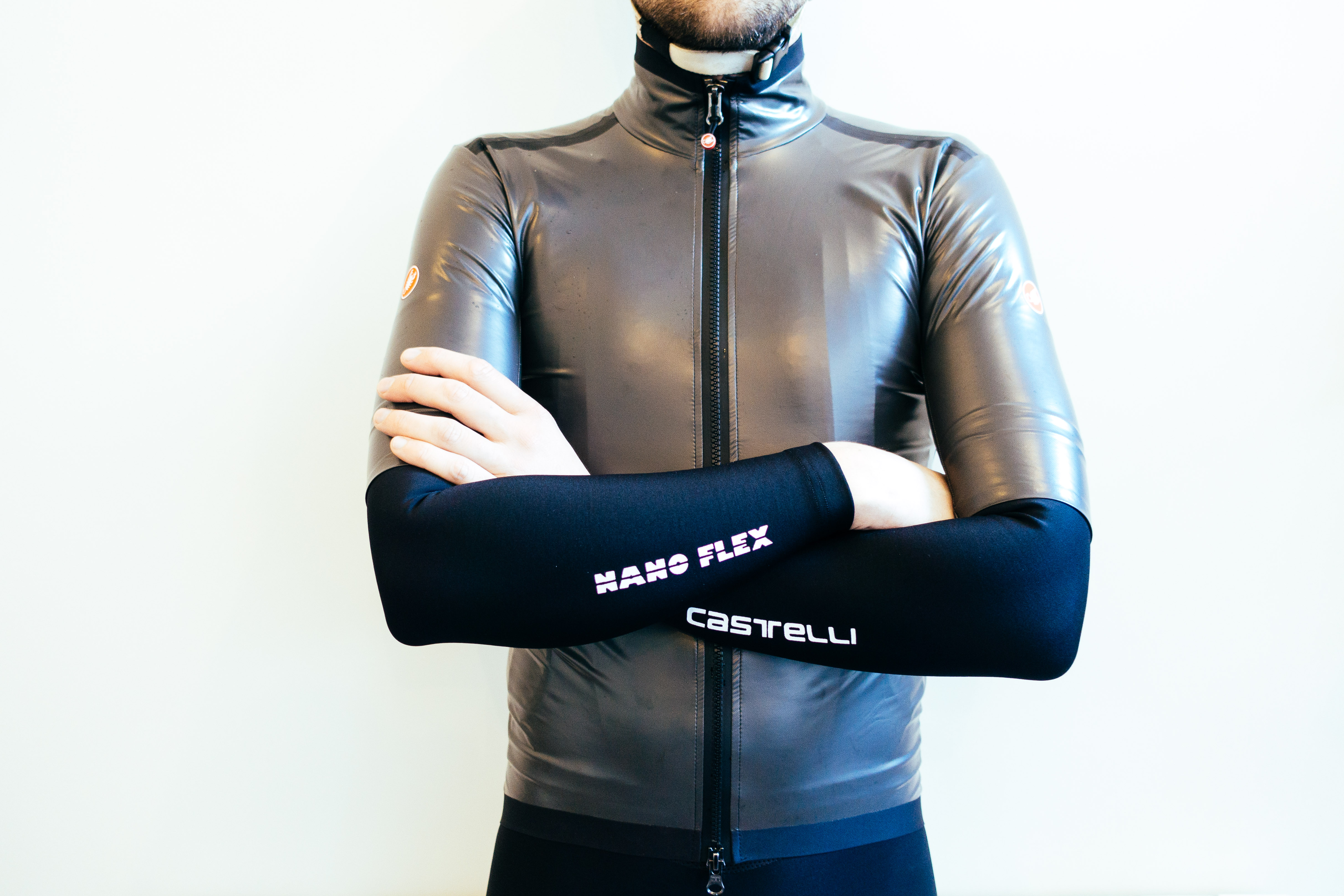
The outer fabric itself does resemble a bin bag. When worn, given the skintight fit, it does more resemble latex clothing perhaps more usually seen in the nightclubs of Berlin than the bergs of Belgium. In the immortal words of my partner: “you look like a gimp”.
The outer fabric looks like it’s taken straight from the film-out Shakedry playbook, but unlike Shakedry the membrane here is a polyurethane one, bolstered by a PFC-free DWR treatment, so very much compliant with the new regulations which have effectively outlawed the use of PFAS for consumer goods.
Like the forearms of the LS version, the rear pockets are made of a different material so they don’t grab at your hands. Finally, the zip, which is a chunky, double-ended waterproof setup, oddly not from YKK but from the Ideal Fastener Corporation. This is really only a detail for die-hard zip nerds, but the fact that Yoshida Kōgyō Kabushikigaisha doesn’t have an absolute monopoly is somewhat heartening.
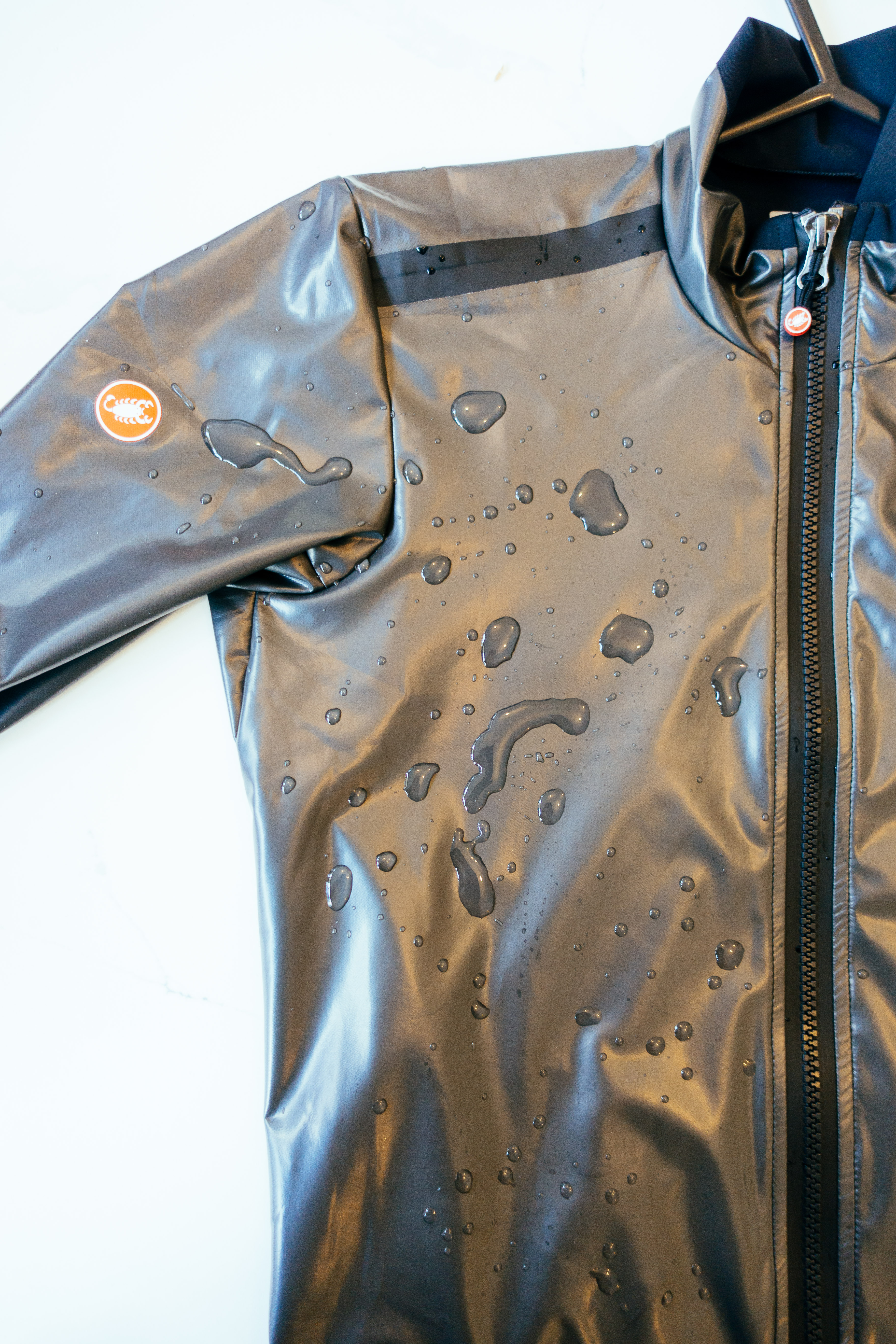

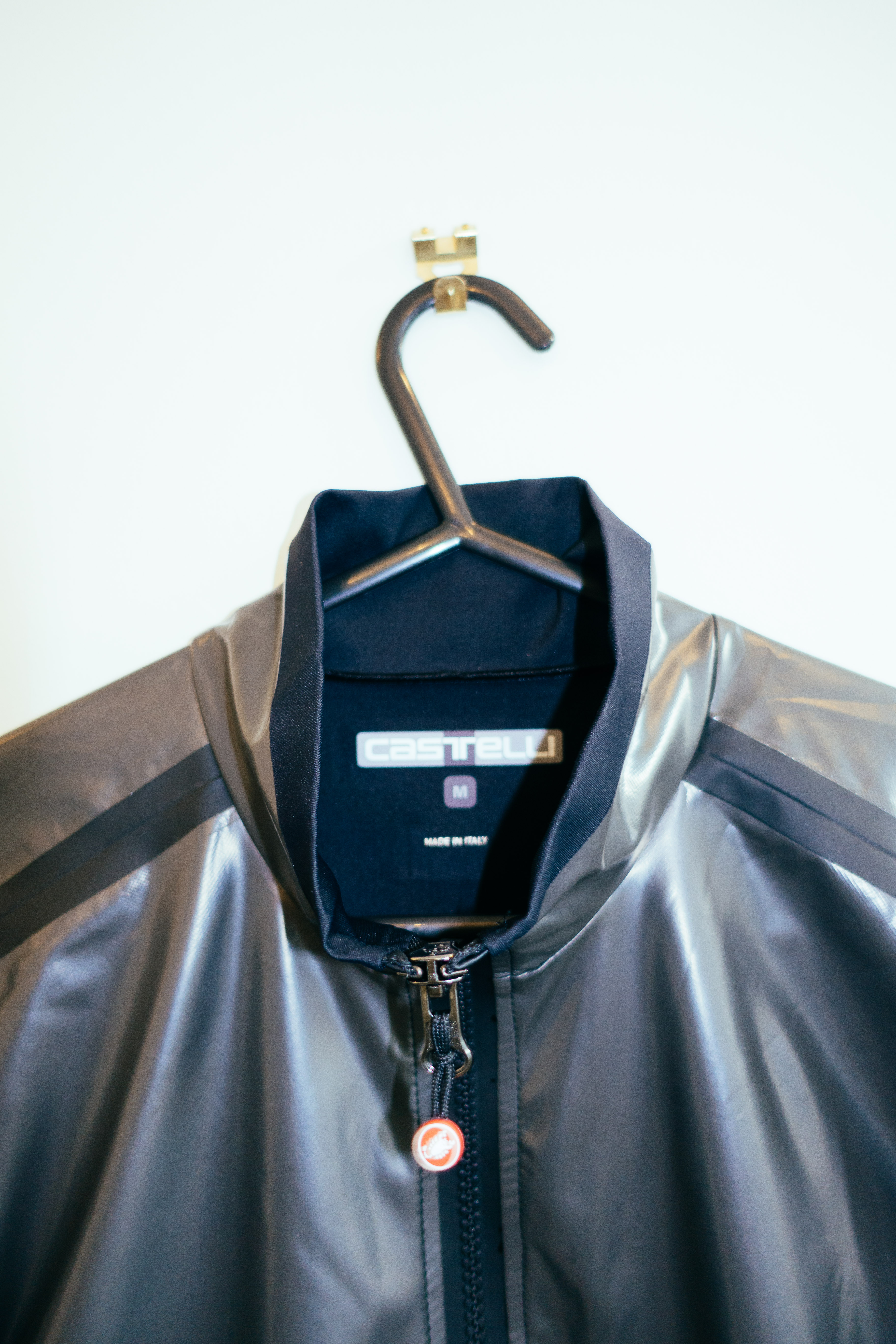
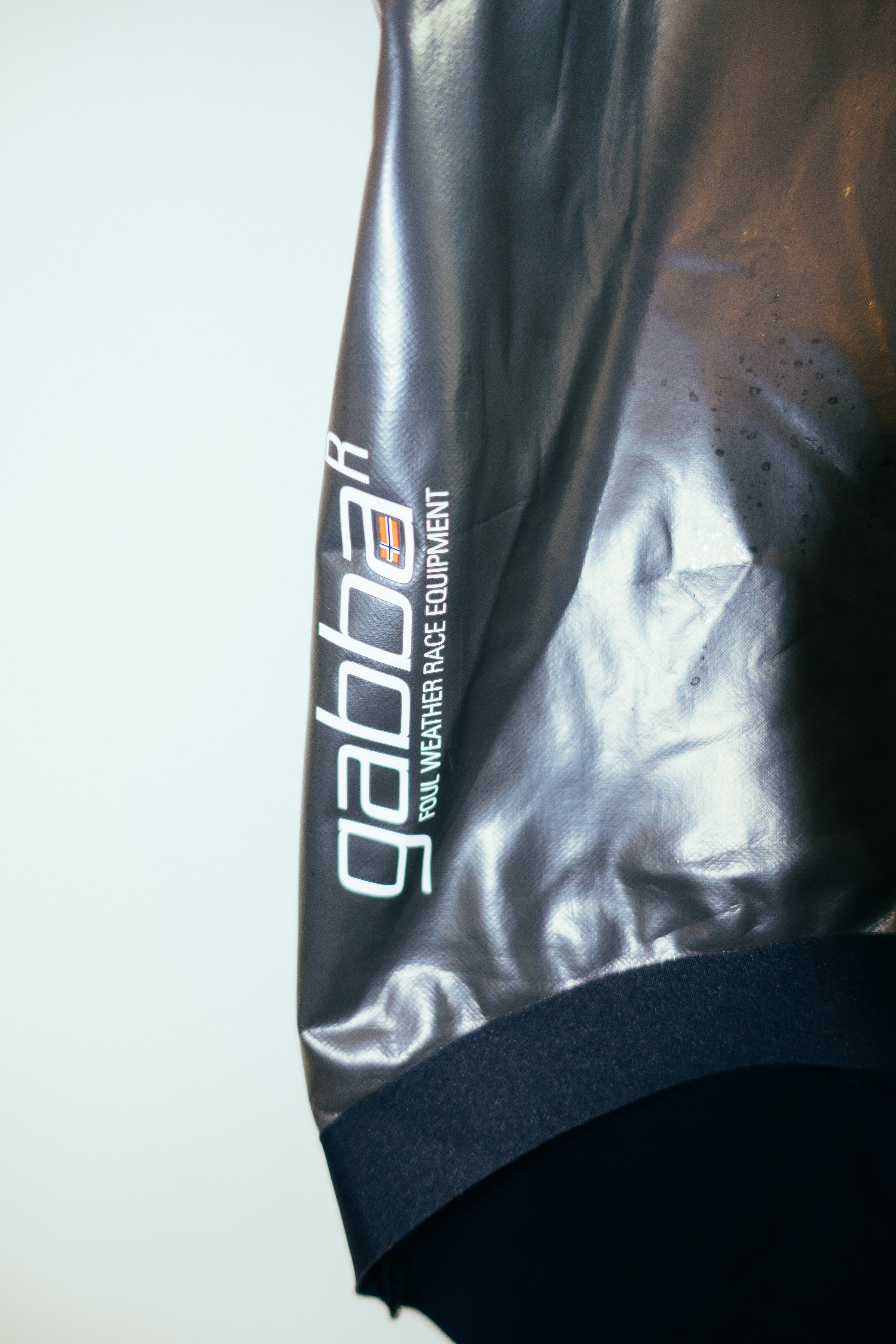
Performance
I’ll make no bones about it, The new Gabba R has impressed me hugely. It’s not going to be perfect for everyone, but if your use case fits within its remit you'll be extremely satisfied. The first thing to say is that this is absolutely a race jacket (or jersey… make your own mind up). It’s noticeably cooler than an equivalent ‘normal’ waterproof, and my theory is that this is down to the fit. Without that small layer of air between the jacket and your mid layers there is no insulation to speak of, and to compound this when it’s wet the evaporative cooling effect of the water mixed with wind is increased as you are effectively in contact directly with the outside world.
The flip side to this is that, for the level of protection it offers, it is quite astoundingly breathable. It is, on paper, less breathable than the now-extinct Shakedry jacket in my collection, but because that air layer isn’t present it feels less clammy. Riding hard in driving rain the temperature regulation is very similar to that of the Perfetto or the original Gabba, but you’re less wet.
Even when it isn’t raining it is still a useable garment, and much like the Perfetto. I went out for a 50km loop expecting rain and kept the Gabba R on the whole time. Only on one long climb did I get hot enough to have to remove my arm warmers. It was a fresh day, but not freezing, with periods of quite sunny weather.
I think it makes the most sense with the arm warmers, to be honest. If you're riding hard exclusively in torrential rain then maybe the LS version makes sense, but it will certainly reduce the versatility.
More so than other jackets getting your mid layers right is important. There isn’t room for anything truly warm, but with a short-sleeved merino base layer, and a short-sleeved merino jersey I was comfortable at around 6 degrees Celsius in the pouring rain and high winds. I can see, that once the temperatures climb into double figures, this could easily go simply over a jersey, with the jersey acting as a base layer.


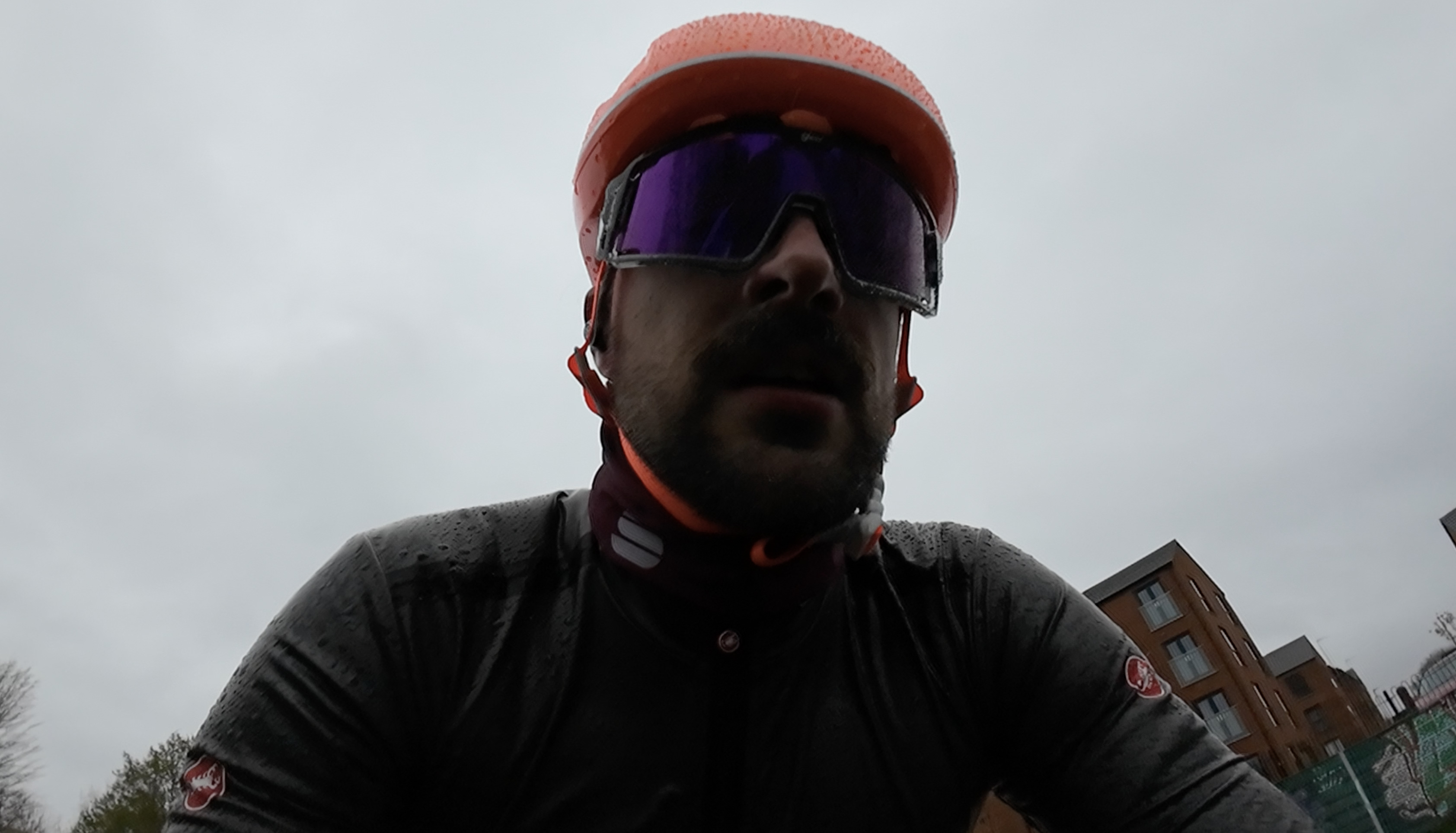
One thing that is remarkable while wearing it too is the aero-feeling. While the tailwind may have had something to do with it I was happily setting PRs on long, flat segments. No flapping anywhere.
After a fair stint in bad weather, the DWR treatment held up well, though the material itself is so plasticky that I suspect that even after the DWR wears off it’ll still bead a little bit. One thing to note though is that you may not remain totally dry. Castelli says it is ‘functionally’ waterproof, but the 5,000mm hydrostatic head is half of what would normally be considered waterproof, and the seams also aren't taped. I don’t think, even in some pretty horrendous weather, I experienced any noticeable ingress, more just the perspiration that is to be expected from any high-effort activity.
Staying totally dry I think is a concept that’s becoming slightly outdated; staying comfortable is the right way to think - nobody worries about staying dry when they’re pouring water over their head in the summer in an effort to stay comfortable, and I think we should all adopt this attitude a little more when thinking of winter gear too. Surfers are not dry, but with the right wetsuit, they are comfortable, for example. I was a tad sweaty, but no more than I would be with any other high-end waterproof jacket. I was, however, comfortable, flap-free, and fast.
Finally, the pockets. The stretchy material they are made from is excellent, and they are tall enough to swallow all manner of warmers, gloves, and snacks. Given the Gabba R could comfortably stretch over the other jacket I had in my jersey pocket you can really load them up, though that isn’t really the racy ethos.
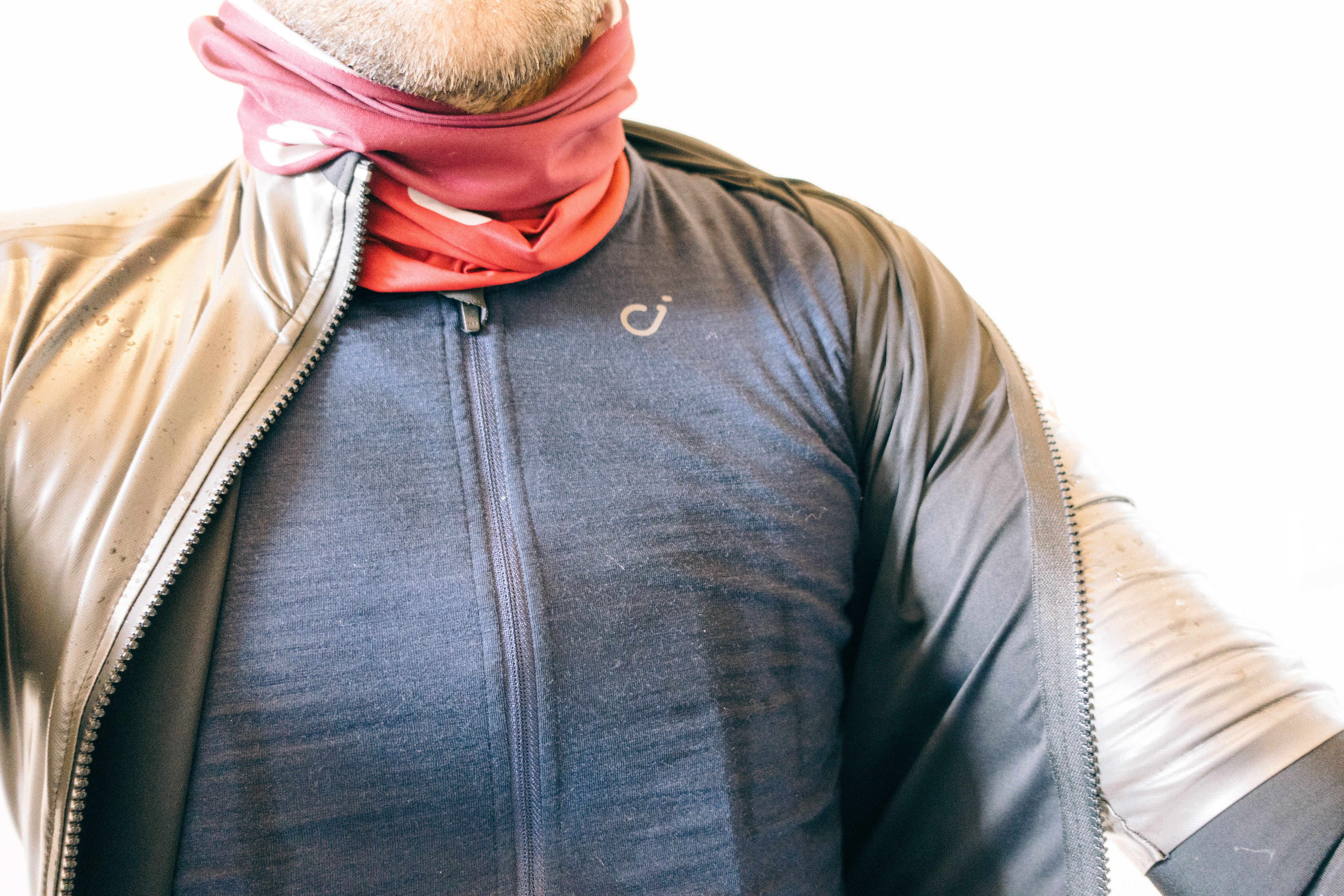


Value
If your wet weather riding is at a more sedate pace then this isn’t going to offer you anything, and as such the value proposition is basically nil, but that’s not what it’s pitched at. If you, like me, eschew the world of indoor training and prefer to turn your face to the elements and you need something that is going to perform when you need to perform, I don't think there’s anything on the market right now that can touch it.
With high-end jackets like the (admittedly gravelly) Albion Zoa and the Rapha Explore Gore-Tex coming in at over £350, the €249.99, or about £213, price tag for the Gabba R looks like a bargain if it fits your needs. You can easily throw in some new arm warmers to match and you’ll still have a huge amount of money left over.

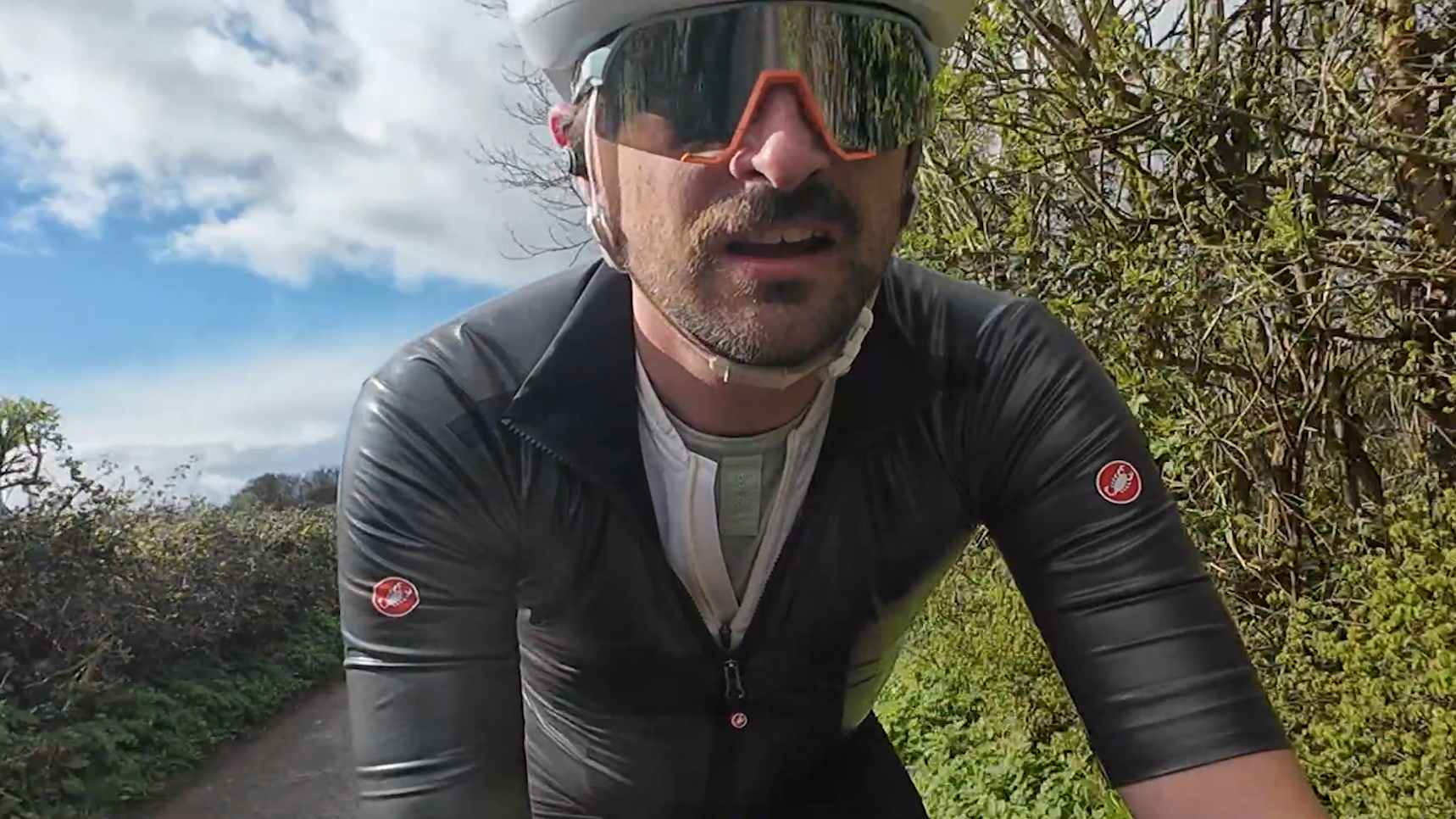
Verdict
I’m pretty blown away by the Gabba R. It’s far more breathable than I expected, the fit is impeccable, the pockets are excellent, and the protection it offers from the rain is great. If you’re giving it both barrels you’ll be better off in this than more or less any other waterproof, both from a speed point of view and a temperature regulation one.
Perhaps when you’re faced with truly biblical rain you’d rather opt for something more solid, but when push comes to shove, and the rain is lashing at your windows with force, are you really going to go riding in that? I suspect for those changeable days that we ride in more frequently it’ll get more use than a more expensive hard shell, and given the price compared to those options it makes the value proposition excellent.
It is, however, a race garment. You don’t want to be cruising in it in the rain as you will get cold, and there isn’t the capacity for layering like there is with other waterproofs.
I’ve tested a great many waterproof jackets in the last few years, and I think when using this as it was intended, it is effectively faultless with waterproof technology as it currently stands.
